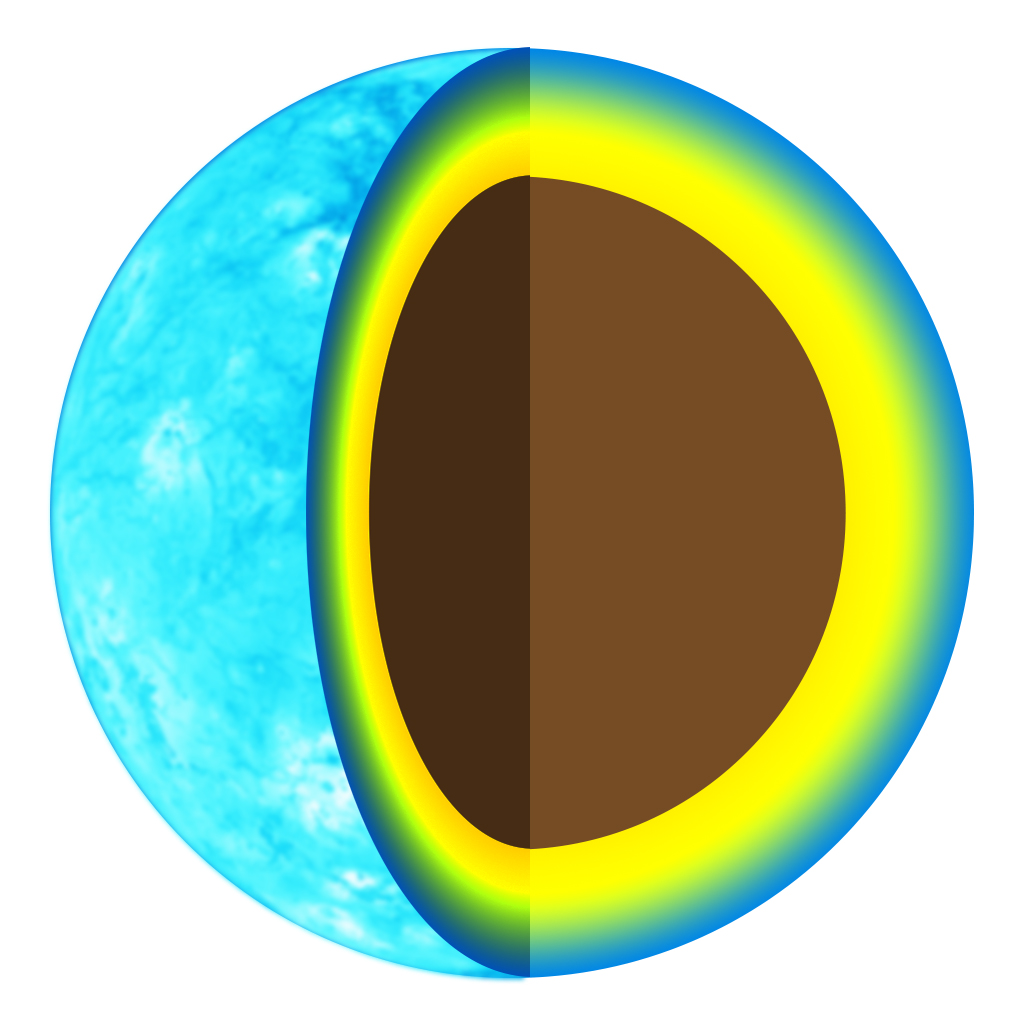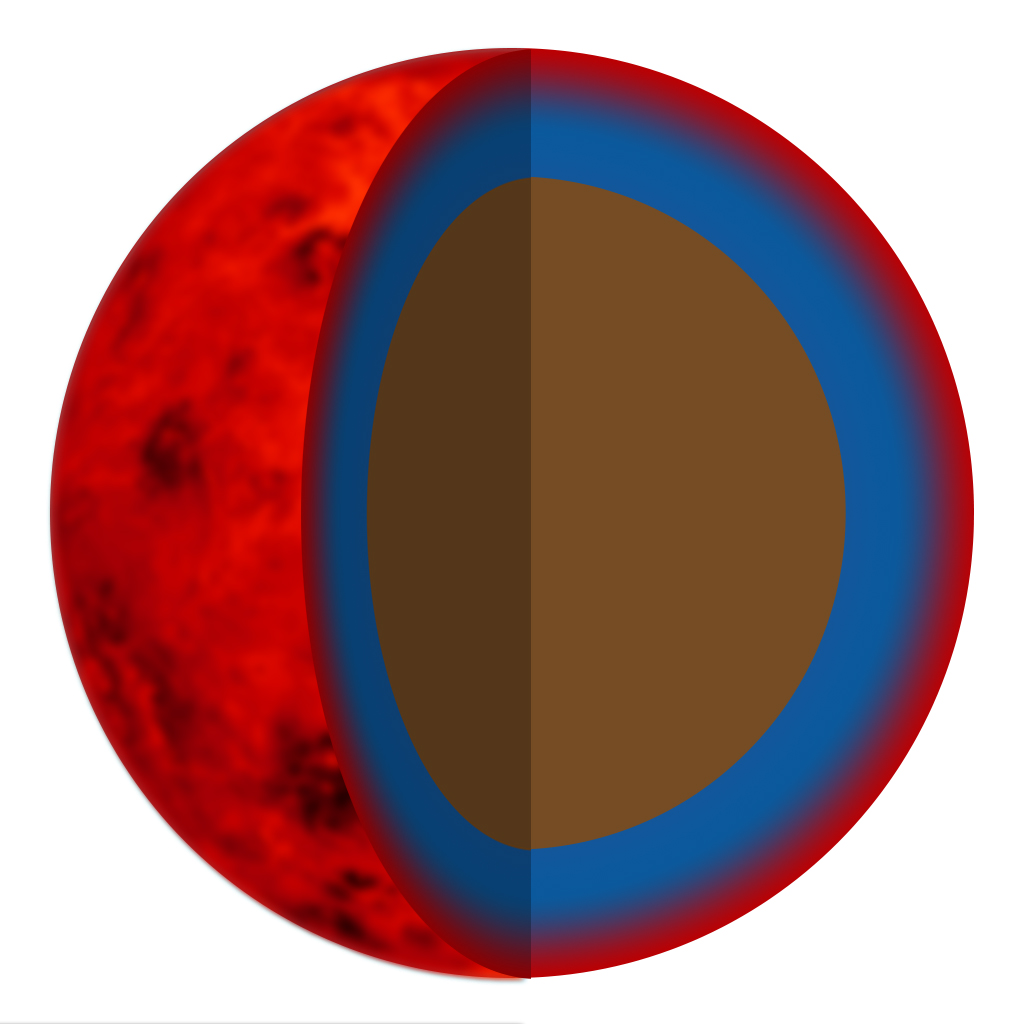Rocky with a hint of hydrogen: what’s a good recipe for a planet?
Rocky planets are rather small and gas giants are large – that’s one hypothesis you might come up with if you look at our Solar System. But is that true always and everywhere? Is our own system an example of the rule or an exception to the rule? Astronomers have now found more than 3700 exoplanets, but very little is known about their composition. At most the radius and mass are known.
But even if the size and mass are known, it is still very difficult to say whether the exoplanet has, in fact, a large, but thanks to many silicates, lightweight rocky core with a thin atmosphere or else a smaller core containing iron with a thick layer of water. However, there are a few physical restrictions that a planet must obey. For example, gas becomes a solid at certain pressures and an atmosphere composed of hydrogen is lighter than an atmosphere composed of carbon dioxide.
Researchers at the University of Zurich have now applied these rules to the 83 planets, for which we have more exact values. By doing this, they discovered some exciting facts:
- Planets with a radius up to 1.4 times the Earth’s radius are usually similar to Earth, that is, they have a structure that is similar to that of Earth
- Planets with a larger radius contain more silicates and other lightweight material
- Most planets with a radius greater than 1.6 times the Earth’s radius have a layer of hydrogen-helium or a layer of water over the core
- Planets with a radius greater than 2.6 times the Earth’s radius cannot be water worlds and have an extensive atmosphere
- If a planet measures more than 4 times the Earth’s radius, it is very likely a gas planet with at least 10 percent hydrogen and helium
- Large terrestrial planets are almost always smaller than three times the Earth’s radius, while mini-Neptunes are larger
If you want to find a world similar to Earth, you should focus on planets with radii less than three times the Earth’s radius.

